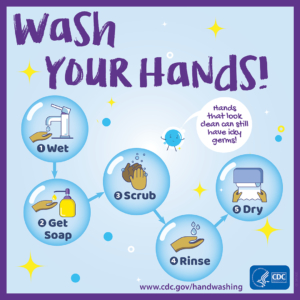Wash your hands

Wash your hands.

Wash your hands.
This module covers the basic concepts for evaluating and briefly managing a patient under investigation for Ebola. Although all U.S. healthcare facilities need to screen and promptly identify patients at risk for Ebola, the content of this module is primarily for Ebola Assessment Hospitals. These hospitals need to be capable of initial evaluation and care of these patients for up to 96 hours until Ebola testing is complete and a diagnosis of Ebola is confirmed or ruled out. Plans should be developed and practiced for safely transporting patients within the facility, designating and preparing a patient room and adjacent spaces to be used by staff, training staff on the use of personal protective equipment, laboratory safety, communications, and environmental infection control and waste management, among other topics. Public health authorities should be consulted promptly for additional information and guidance, and to facilitate transfer of the patient to an Ebola Treatment Center, if necessary.
This module provides guidance to frontline and assessment hospitals for developing plans and procedures for safely implementing appropriate isolation precautions for a patient under investigation for Ebola. The module is focused on the emergency department, which is the likely first point of contact. Planning and adhering to these precautions will minimize the risk of infecting patients, staff, and visitors while these patients are evaluated. The module also outlines guidance for coordinating with public health authorities during the evaluation of patients under investigation for Ebola.
Planning and preparedness are the keys to dealing effectively with threats that include infectious diseases caused by SARS and the Middle East Respiratory Syndrome or MERS, novel influenza viruses like H1N1, and Ebola. During outbreaks or epidemics of these emerging infectious diseases, healthcare facilities must carefully monitor the global situation as it evolves and conduct robust planning to promptly identify and safely manage a patient who may be infected and prevent further transmission. This module focuses on preparedness considerations for Ebola and how to engage a multi-disciplinary team to prepare your institution. Planning, preparedness, and practice will protect patients, visitors, and staff.
Healthcare facilities that provide urgent care and emergency services are first points of contact for returning travelers who might have Ebola. This module provides guidance to emergency departments for developing plans and procedures for screening all patients for relevant travel history, risk factors for Ebola, and signs and symptoms that might be consistent with Ebola. Important concepts are outlined regarding safe, patient- and family-centered screening procedures that can appropriately diagnose and manage Ebola or other illnesses while ensuring respect for the patient and protection of the patient’s privacy throughout the screening process.
This video demonstrates the procedure described in CDC guidance for donning (i.e., putting on) personal protective equipment (PPE) for all healthcare providers entering the room of a patient hospitalized with known or suspected Ebola virus disease. It assumes the healthcare provider will be using an N95 and Gown.
This video demonstrates the procedure described in CDC guidance for donning (i.e., putting on) personal protective equipment (PPE) for all healthcare providers entering the room of a patient hospitalized with known or suspected Ebola virus disease. It assumes the healthcare provider will be using a PAPR and Coverall.
This video demonstrates the procedure described in CDC guidance for doffing (i.e., removing) personal protective equipment (PPE) for all healthcare providers entering the room of a patient hospitalized with known or suspected Ebola virus disease. It assumes the healthcare provider is using an N95 and Coverall.
This video discusses the roles and responsibilities of Trained Observers. A Trained Observer is a clinician, most likely an infection prevention professional, nurse, or physician, whose sole responsibility is to guide healthcare workers as they don (put on) and doff (take off) personal protective equipment (PPE) for caring for a suspect or confirmed Ebola patient. When acting as a Trained Observer you will not be delivering care directly to patients. Instead you will focus on ensuring the safety of healthcare workers.
Information for service members about the West African Ebola virus disease outbreak.
[youtube http://www.youtube.com/watch?v=677xOF9Iua4]

The Ebola Communication Network was originally developed by the Health Communication Capacity Collaborative (Cooperative Agreement #AID-OAA-A-12-00058) and expanded under Breakthrough ACTION (Cooperative Agreement #AID-OAA-A-17-00017) both under the leadership of Johns Hopkins Center for Communication Programs. This website is now maintained by Johns Hopkins Center for Communication Programs and its contents are the sole responsibility of CCP. The contents of this website do not necessarily reflect the views of USAID, the United States Government, or Johns Hopkins University.
